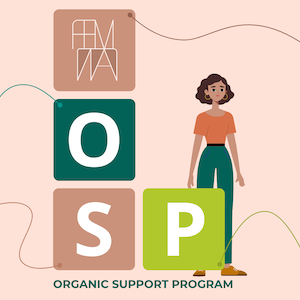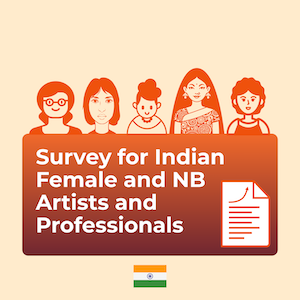“ I am carrying my voice I am carrying my heart … I am carrying my rhythm I am carrying my prayers … But you can’t kill my spirit. It’s old, it’s strong! Like a mountain I’ll go on and on…” Paula Cole and her album This Fire (1996)
So, Aretha Franklin, Stevie Nicks, Madonna, Tina Turner, Linda Ronstadt, Tracy Chapman, Kate Bush, Whitney Houston, Beyonce and Bjork are some of the names that we are repeatedly reminded of when talking about the "most influential" and "biggest female stars" of music. Words like "career", "fame", "challenges", "queen", "heroine", "influence" "sophisticated" and "appeal" echo in thousands of articles, charts and propaganda - created by the dominant culture and sustained by public demand. Yet that culture (and it's enablers) often exclude a vast demographic of women - unaware of many forms of music, traditions and unique identities. Music by women, from vast regions of Africa, Eurasia, South America and Oceania lives outside the Billboards, the Grammy and mainstream media. Remains less audible and distant from public. Worse, categorized as "world music"! Bjork or Aretha Franklin or Beyonce, Euro-American domination (dare we call it global chauvinism) is visible when we look at the Billboard Top100 - today, last year or twenty years ago.
 In a recent study by OECD the disparity is explained in numbers - "(1990-2020) 67% of Grammy award winning female singers and musicians are from North America and 21% from Europe, the remaining 12% made of women from outside the two continents - mostly under the category of world music". The exclusion and tokenism is tacit with such a lopsided global culture. The Grammy and it's perspective on women's music aside, the disparity also exists across music cultures, in almost every part of the world. There's a vast spectrum of native music by women from various parts of the world that we are unaware of. Why or how is a bit obvious...
In a recent study by OECD the disparity is explained in numbers - "(1990-2020) 67% of Grammy award winning female singers and musicians are from North America and 21% from Europe, the remaining 12% made of women from outside the two continents - mostly under the category of world music". The exclusion and tokenism is tacit with such a lopsided global culture. The Grammy and it's perspective on women's music aside, the disparity also exists across music cultures, in almost every part of the world. There's a vast spectrum of native music by women from various parts of the world that we are unaware of. Why or how is a bit obvious...We sense a need to divest (mute) from cultural chauvinism and the institutions which "sustain harmful stereotypes" [UN Human Rights]. Hence, one should invest (amplify) music, traditions and identities of women across the world. The music created and stirred by working class women has a vast legacy, who are also amazing musicians, singers, instrumentalists and drummers. And guess what ?! There's so much of that thriving locally, across the world as we speak. Part one begins with five snippets of women involved in music and community building. Their songs, traditions, poetry, theater, percussion groups and dance (while raising children, heading the household and working in factories and farms)
★Across eastern Europe (the Balkans) village songs are mostly women’s songs. About weddings, about why a girl doesn't want to marry a boy... about love and longing... about orphans, widows, spirits, witches and funerals. Simply put, the fabric of rural life and memory is woven in such songs. And thousands of them! Initiated by Ewelina Ferenc (Poland) "Songs from Eastern Europe" embodies the music of Balkan women and the innate strength of women inside small communities. The past 500 years saw many types of folk music in Europe face persecution and some driven to extinction. Withstanding such brutality, politics and censorship, many songs and traditions survived, invoking new hope and inspiration for girls and young women of the region. As a musician and instructor Ewelina has sung in twenty languages with diverse repertoire of Balkan music - now training younger women from Poland, Ukraine, Romania and Czech Republic in various capacities, centered around respective musical and lyrical forms. The initiative is mostly training based, loaded with expectations, as explained in a recent article here. "Traditional Romanian, Slav and Balkan songs from the 1920s and 30s acquired a new calling in the last ten years, almost a hundred years later! I feel the music relates to many young people who migrated away from this region and those who want to represent it..." says Teodora Panainte, a popular Romanian folk singer.
★For long the women of Vietnam have weaved folk songs as a form of non-violent resistance. Lyrics and music which played an important role to shape resistance, during the American invasion and earlier during French colonization. Even as Vietnam fares better in terms of gender equality when compared to most Asian countries, child marriage and domestic violence is high in Vietnamese society. Folk music and Vietnamese women are finding new inspiration, in a collective sense. World famous violinist Midori (UN Peace Prize winner) has gone back to the grassroots, to collaborate with women from Vietnam recently. Hundreds of working women who are also singers and musicians are working with IFAD on village projects to "increase working women’s access to cultural spaces, radio, local markets - aim is to create autonomy and increase income". Empowerment via folk music, a strategy adopted by IFAD in Vietnam. Perhaps the combination can work in other nations as well? "The change in terms of equality and gaining economic independence, did happen via music, in ways that we were not able to imagine earlier.." states Midori after a tour across rural Vietnam.
★The women of Vanatu are famous for their “Water Music” or Ëtetung. Vanatu is an archipelago of 70+ tiny islands nestled in the south Pacific. Transcending from an ancient ritual, Water Music became famous as a form inspired by “nature mother” and of purely “feminine spirit”. Punching, splashing, wading through water, women create hypnotic beats. Add calls and hoots that mimic birds and animals layered under a female choir, creates the principles aesthetics of Water Music. Over time, the Ukele, Latin and African percussions made their way into Water Music. The form has been exported to nations like Australia, New Zealand and Indonesia."Endemic to Vanatu, Ëtëtung is indeed a rare form of music that is all female - draws it's sound by using water as a percussive instrument and the female voices in unison as the protagonist" explains Delly Roy, heading a project centered around Vanatu women and Water Music. "Water Music lets women create their own physical and conceptual space, and by doing so, the Leweton community retains it's endemic culture while encouraging younger women..." states a recent article by UNESCO .
★Music and songs of rural women in Southern India. Shall we hear songs which speak of identity, memory, class tyranny and resistance? Divest from Bollywood and listen to working class women? Small acts of moral courage can subvert the borders
drawn by class, gender and identity. Songs, dance and theater acquire new meaning when facing massive inequality. Powered by marginalized women from rural Karnataka, Bevaru (Sweat) is such an example of women's resistance based on music. A collective effort that refuses to wilt away at the face of dominant hierarchical culture. Bevaru was founded by the arts and media collective Maraa based in Bangalore, India. A small group of highly motivated women and men creating programs based on two lucid ideas - resistance and play. "Our creative practices are located in and informed by the everyday public
spaces of the city. Through walks, projections, installations, and performances we grapple with questions of exclusion, access, and privilege in this rapidly transforming city" states Ekta, co-founder of Maraa. In 2020, Maraa created "Lets Play" a video based project, reaching out to migrant labor and other marginalized communities, documenting their biographies, songs and entertainment.
★Why African and Asian goddesses and local deities are often depicted playing a drum is a matter of great curiosity. The drum is often cited as the oldest instrument and drumming in a group, one of longest surviving collective rituals known to humanity. Women across the sub-Sahara have kept drumming traditions alive, centered around dance and social rituals. As tribes migrated and proliferated, so did their dances and rituals. Always invoking group energy: for war, for celebration or praying to gods and forces of nature. For more than 2000 years, the women of sub Sahara and central Africa have provided music and beats - collective drumming that remains at the epicenter of social gatherings in thousands of small communities speaking hundreds of different dialects. The instruments and rudiments over centuries, traveled to foreign lands such as Sri Lanka, India, Turkey, Iran and to the far-east. Frame Drum and Djembe ensembles build on poly-rhythms, while alternating between the emphasis of each member. New collectives like Nimbaya (Guinea), Bele Bele (US) and Venus Rising (International) feature new women drummers and percussionists, of various nations, with a staggering diversity of beats.
Next in part two, we dig deeper and discover music by women from Spain, Senegal, Portugal, Hungary, India and France.



















